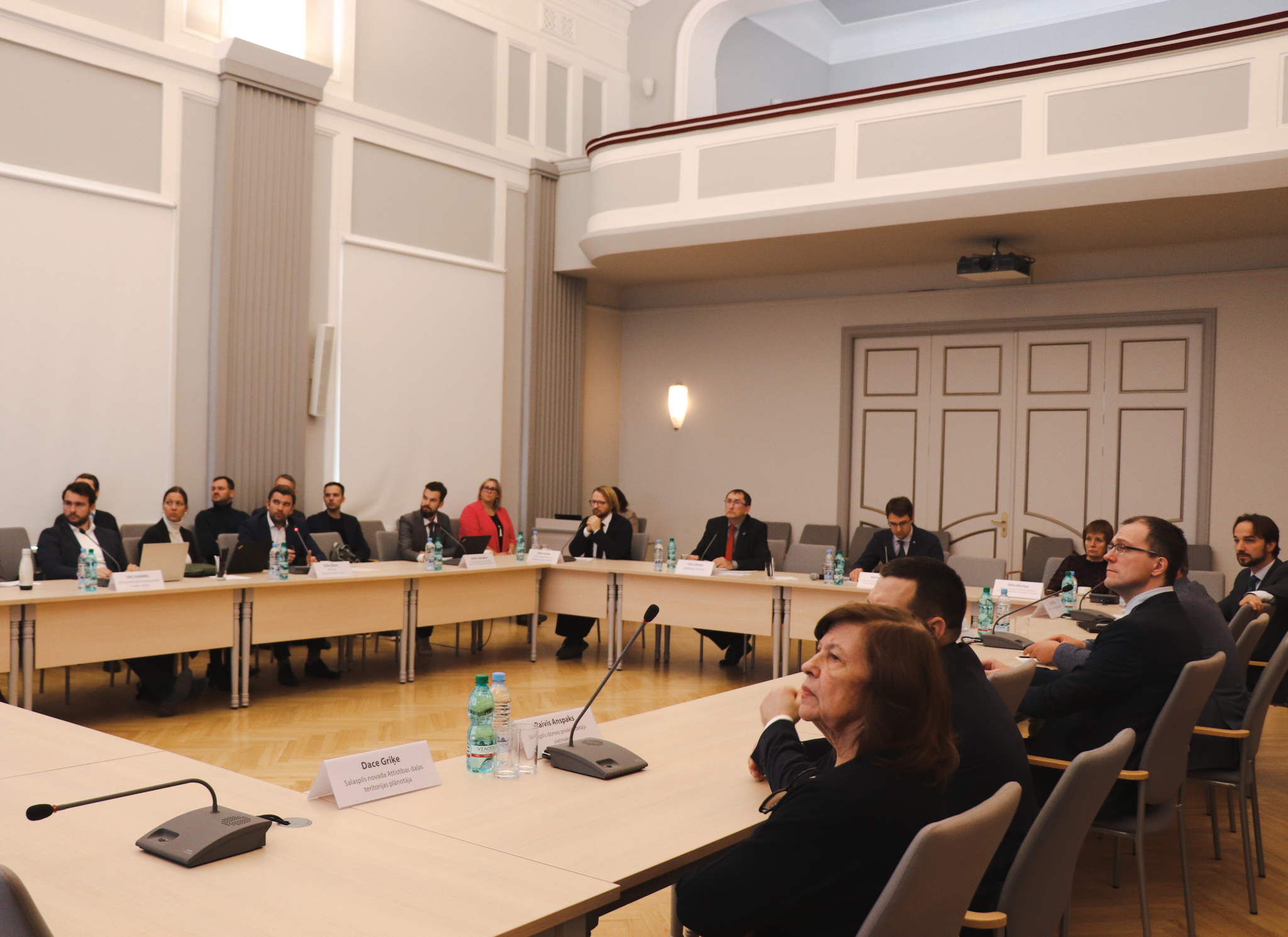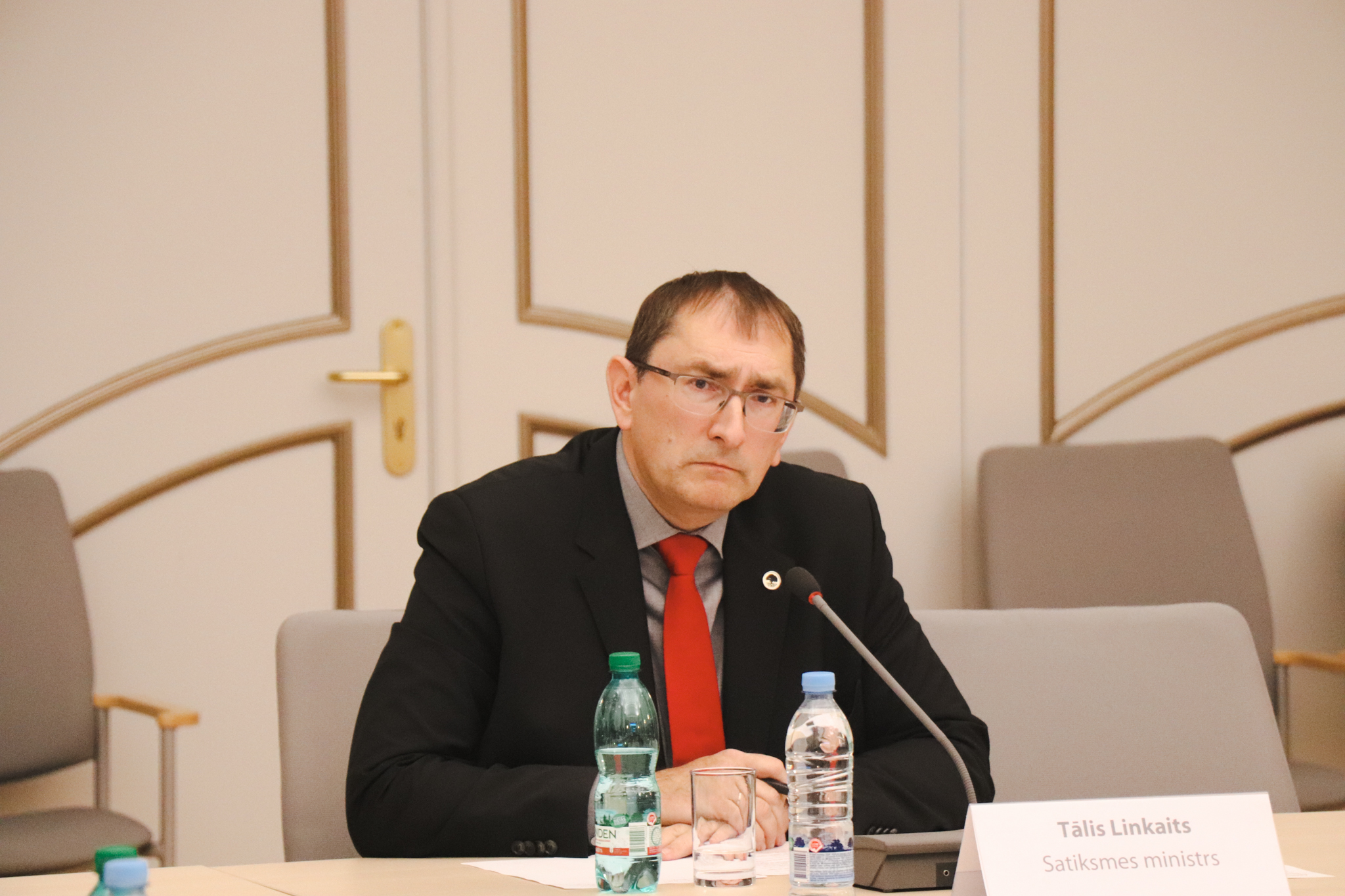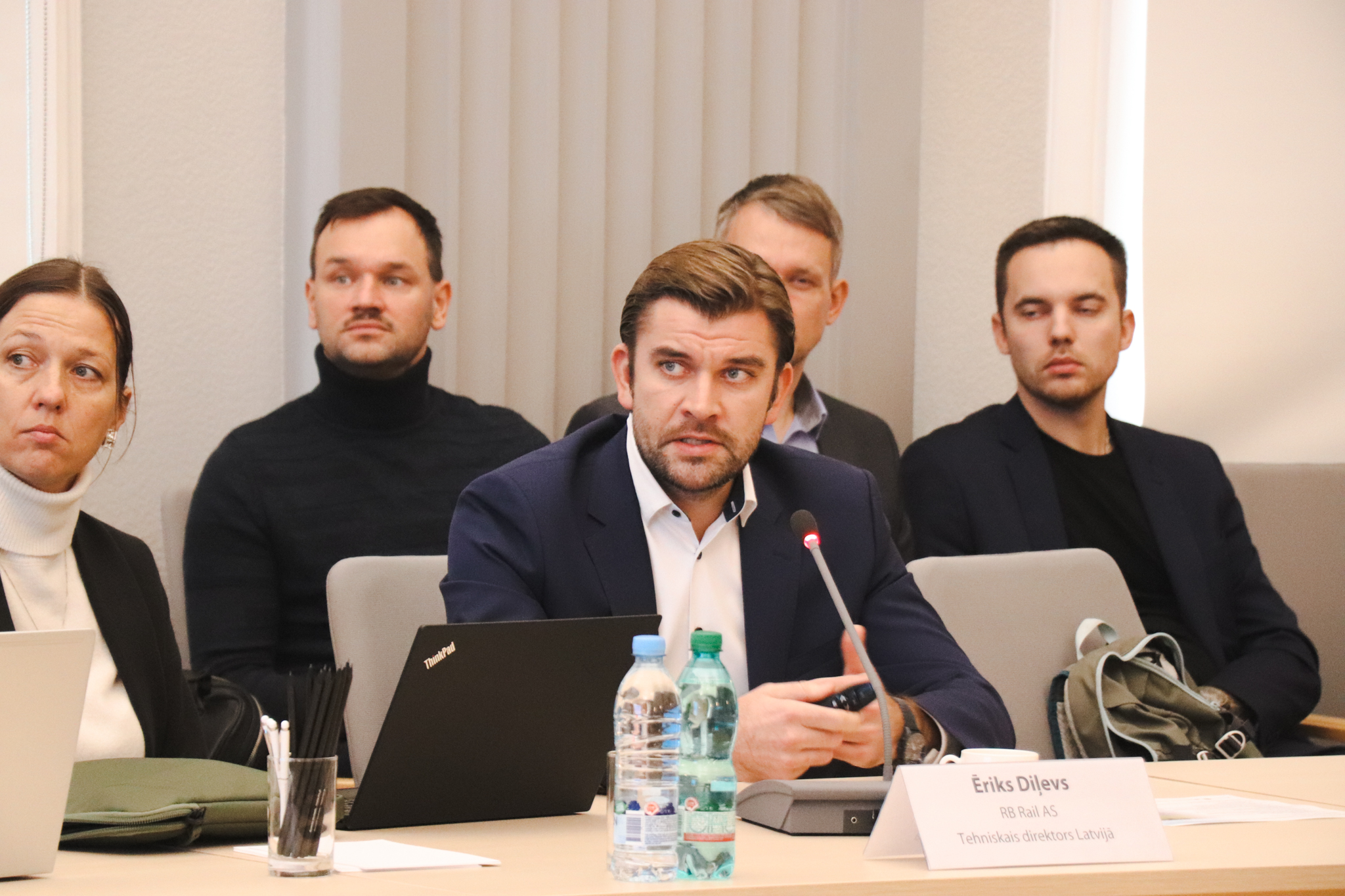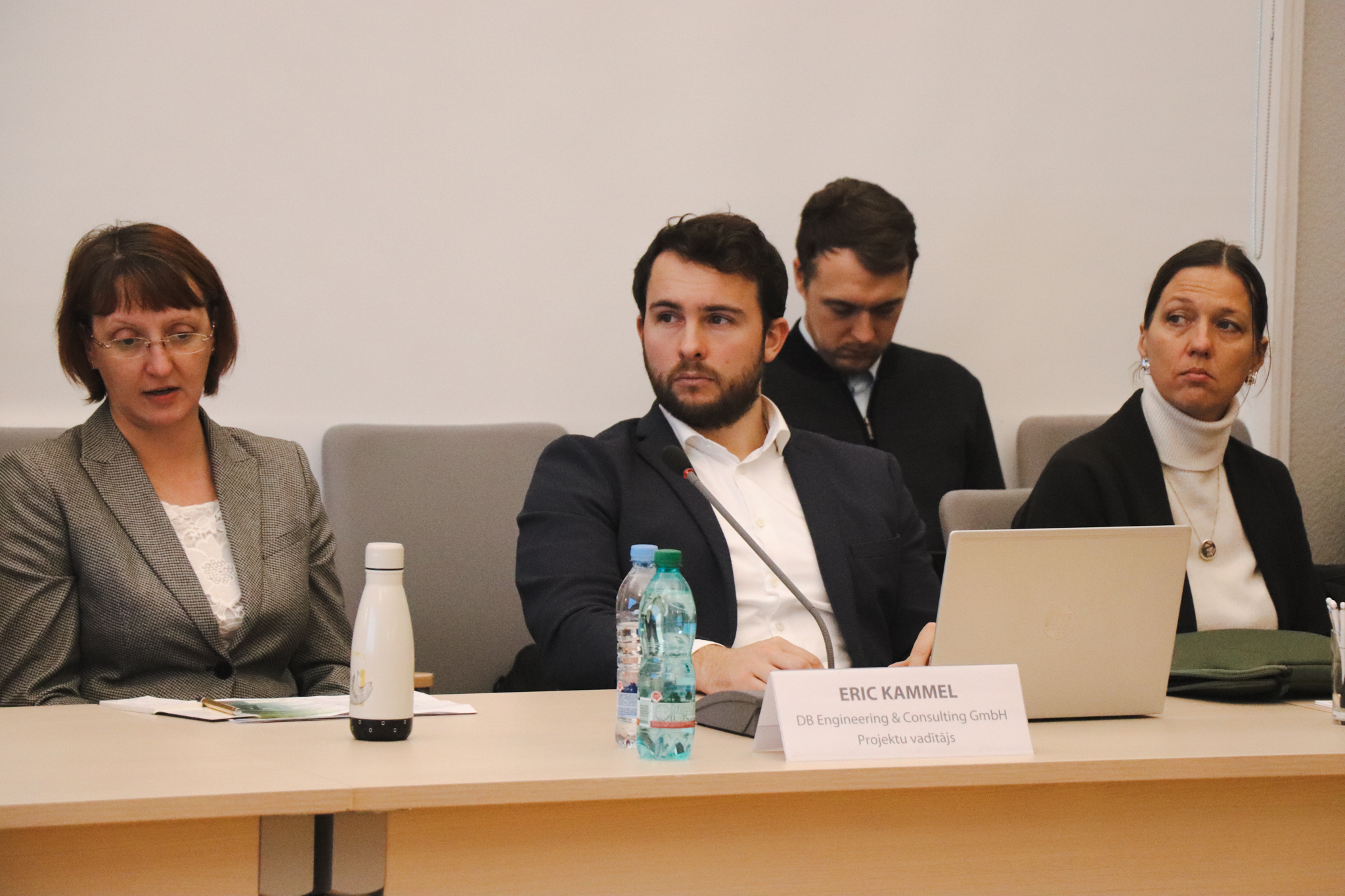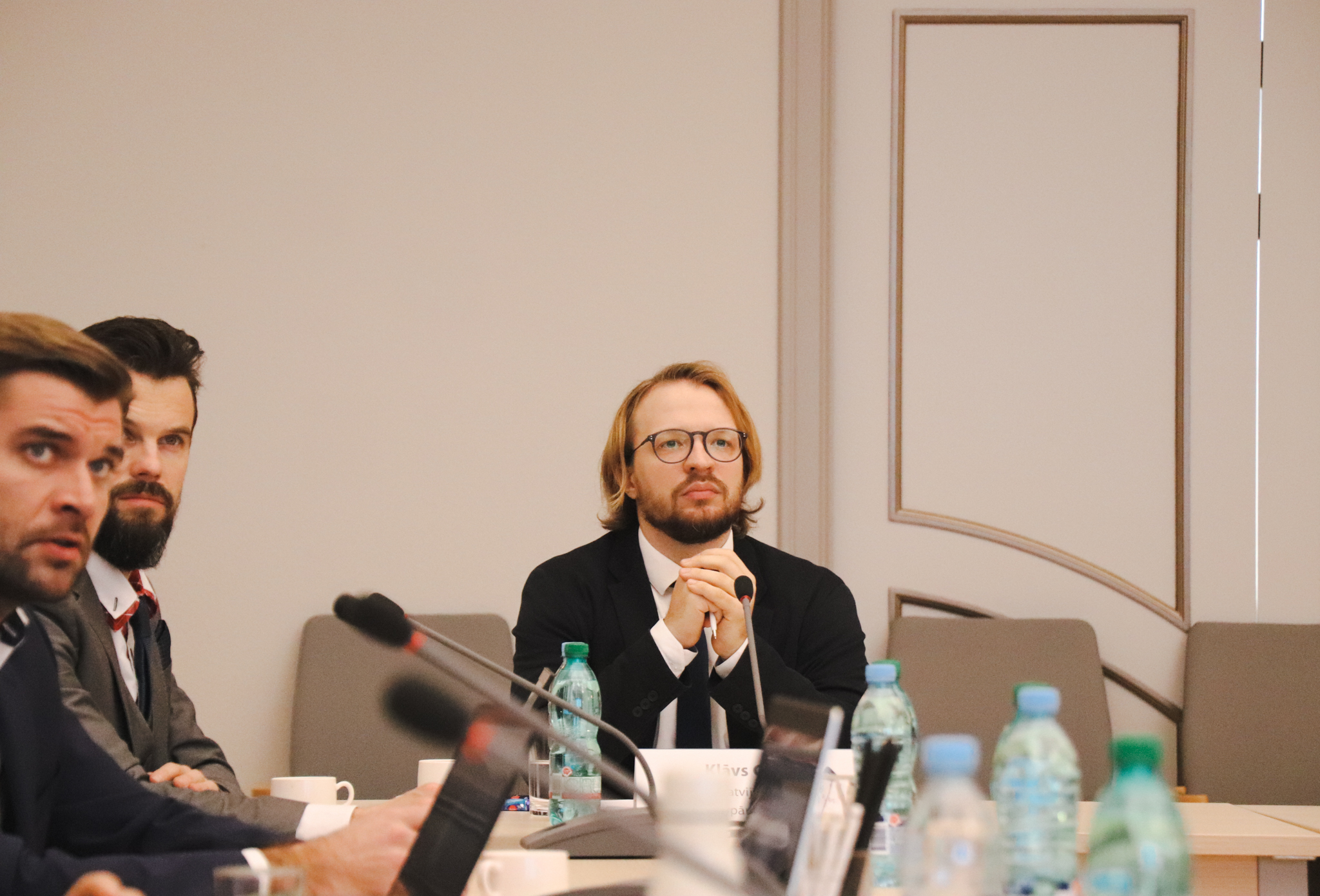On Monday, October 31, the Ministry of Transport in Latvia held an expert discussion about the technical solutions and construction plans for the combined bridge over the Daugava River and related road infrastructure.
“The new dual road and railway bridge over the Daugava is an important connection both for Rail Baltica project but as well for the whole transport system in Latvia. Construction of Rail Baltica mainline will be prioritised in the direction from the Lithuanian border to Riga International Airport and the Salaspils intermodal freight terminal to be able as soon as possible to ensure railway operations towards Europe. On the other hand, in the road traffic this bridge is essential to connect the Riga ring road and to build it in accordance with the existing traffic load, thus creating a modern highway,” Minister of Transport Tālis Linkaits emphasized in the discussion.
Transport industry experts, including from Rail Baltica delivery organizations – joint venture RB Rail AS and national implementing body in Latvia “Eiropas Dzelzceļa līnijas”, DB Engineering & Consulting GmbH, “Latvijas Valsts ceļi” as well as representatives from Salaspils and Ķekava municipalities participated in the live discussion.
Technical Director of RB Rail AS in Latvia Ēriks Diļevs explained the idea of the combined bridge and provided information on the project implementation progress and timeline: “The combined bridge over the Daugava is one of the most complex Rail Baltica infrastructure solutions and a unique structure in the world, and in the current geopolitical situation, it has gained even more strategic importance in strengthening the connectivity and mobility of the entire region. We have developed the preliminary and master design solutions and carried out all necessary geodesic and specific geotechnical works in the Daugava River. Now, we are in the stage to finalise the detailed technical design.”
“The developed solutions of the construction project envisage two separated highway carriageways with two lanes in each driving direction and additional stopping lane at the level of the upper bridge, as well as railway infrastructure for passenger and cargo transportation at the lower level. Total length of the bridge is 1,15 kilometres with the chosen construction solution – a steel truss system bridge with a height of up to 12 metres and massive supports in the Daugava,” added Diļevs.
Completion of the construction project is planned by the third quarter of 2023, so that at the end of next year, after attracting funding from the Connecting Europe Facility (CEF), the construction of the first phase could begin.
Design works of the Daugava dual bridge are carried out by DB Engineering & Consulting GmbH, and from the point of view of the designers, this infrastructure is essential for the connectivity of the Baltic States with Europe, as well as for the further development of Salaspils and Ķekava municipalities.
“This project envisages two railway tracks with a speed of 249 km/h, above which there will be a road with two carriageways. The bridge will consist of eight steel spans, including six 150 metre spans and two 125 metre spans. The amount of available steel required for a 1,15 kilometres long bridge will be relevant during the design and construction phase,” said Erik Kammel, Project manager at DB Engineering & Consulting GmbH. “This project also includes cost optimization, as the maintenance of the combined bridge will require less funds than in the case of two separate bridges, and the chosen solution will also ensure better military mobility and have less impact on existing engineering communications,” he added.
In addition, road infrastructure issues were discussed, and plans presented by Klāvs Grieze, Director of Development Administration at “Latvian State Roads”: “Construction of the bridge will contribute to the national road development strategy of Latvia until 2040, foreseeing creation of a unified, safe, and efficient national main road network to ensure reach of the Riga bypass from any administrative centre in Latvia within not more than two hours. In addition, construction of the combined bridge will promote requirements contained in the European Union’s regulatory acts regarding construction of high-speed roads in the TEN-T core network, as well as relieve load on the Riga HPP dam from cargo and other types of transport.”
“To start construction works, financing, completed construction project and expropriation of lands are required. Subject to fulfilment of these prerequisites, as well as completion of the Rail Baltica mainline construction procurement, it is planned to start the initial construction works in the vicinity of Iecava, followed by the section where the combined bridge is located. The bridge is divided into three construction permits, and it is planned to start the work on the third stage of the construction permit (works located in the water) as it is one of the most time-consuming stages of construction, involving welded steel trusses, concreting of supports in water and foundation construction in water. These works are expected to be started at the end of 2023 and planned to be completed at this stage by the end of 2026,” concluded Einārs Jaunzems, Project implementation director at Eiropas Dzelzceļa līnijas.
Watch the recording here: https://www.facebook.com/satiksmesministrija/videos/1160714801496021

